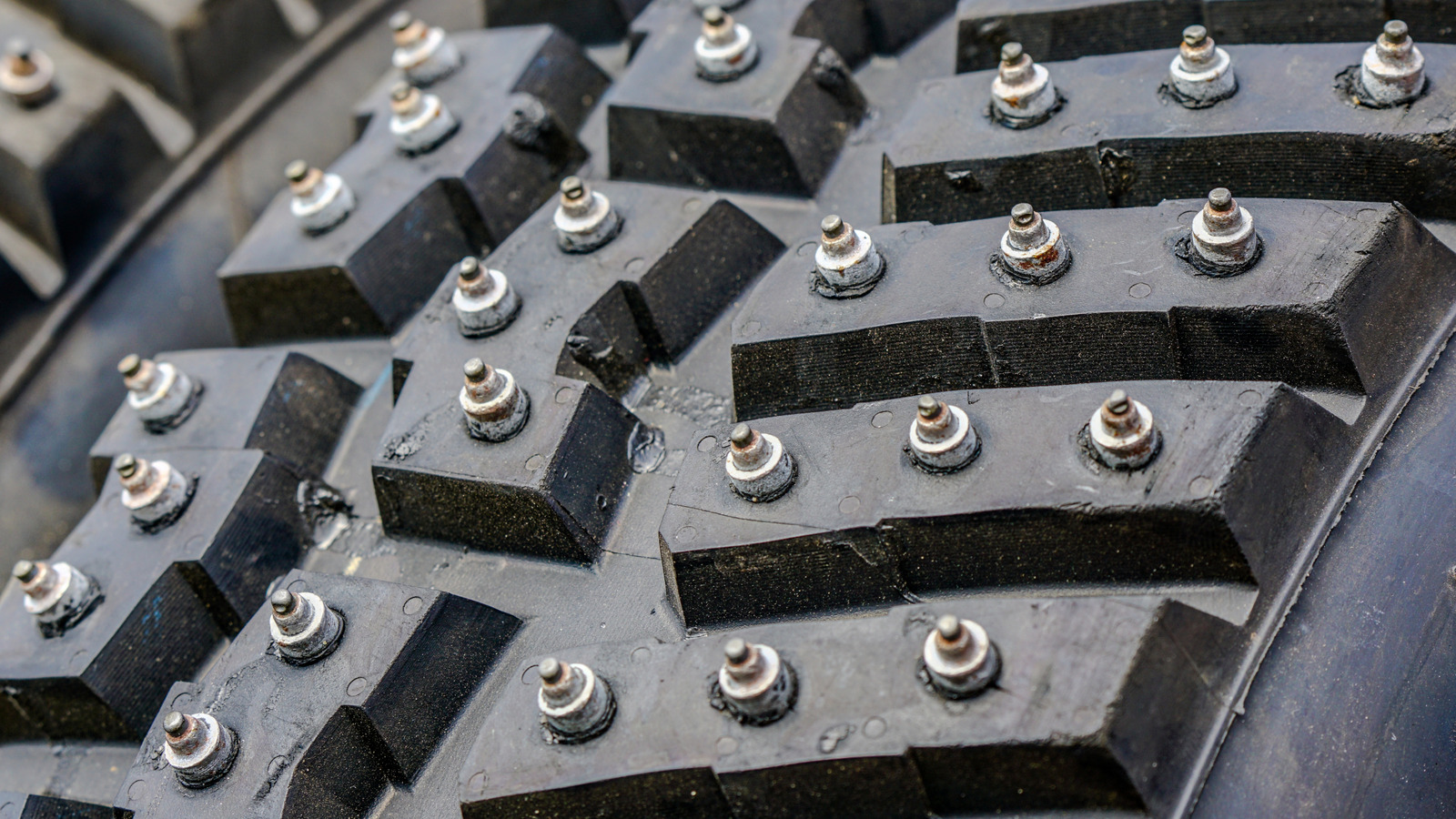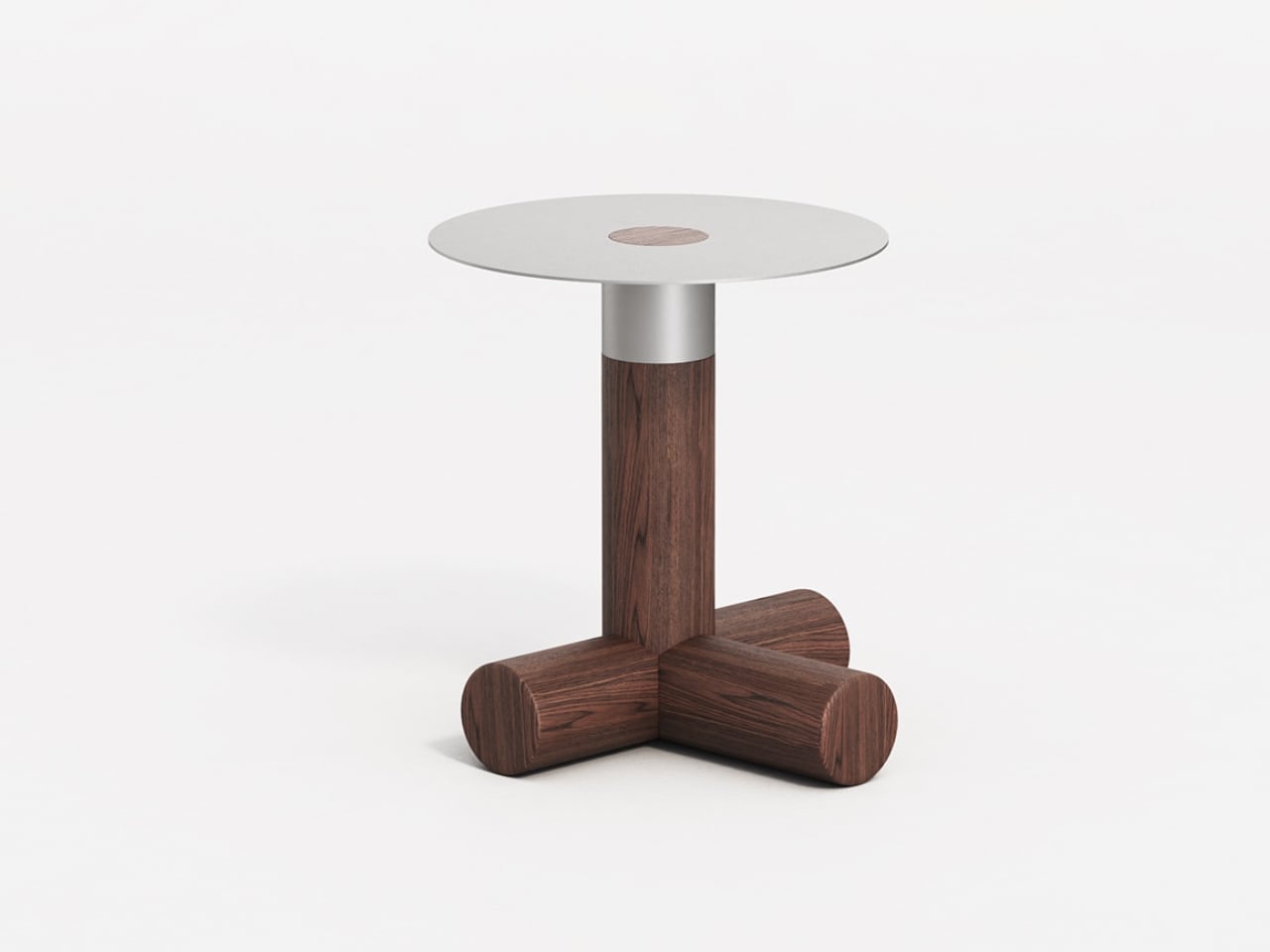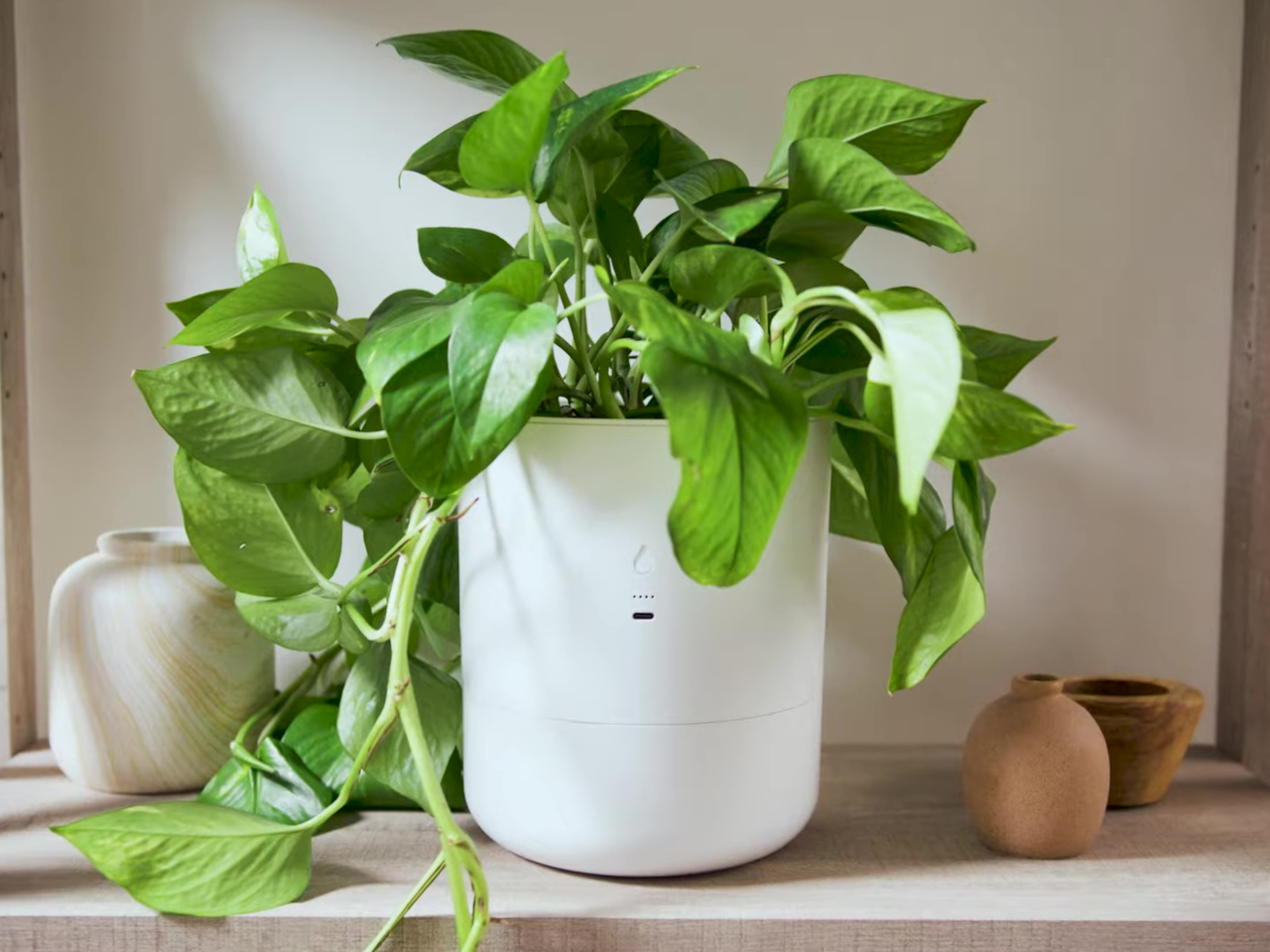Your Money and Your Health
Parker Hewes, author of Lifelong Youth, shares the 8 health behaviors that are essential for longterm health and wellbeing! Read more → The post Your Money and Your Health appeared first on Mad Fientist.

Health is similar to finances in that there are many overly-complex things people say you need to do, but there are just a few simple things that actually matter.
What is the “spend less than you earn, invest in a diversified/low-fee portfolio, and leave it to grow/compound” of the health world?
That’s what today’s post is about!
Parker Hewes wrote a book called Lifelong Youth: The Simple Path to a Long & Youthful Life, and today he shares the eight health behaviors that will do the most for your longterm health and wellbeing.
If you’d prefer to listen to a podcast instead of read the article, he also recorded a short episode that you can listen to on Spotify or Apple Podcasts.
Take it away, Parker!
We fientists are optimizers – endlessly on the hunt for improvement, efficiency, and growth.
We look at every decision with intentionality and a dose of stoicism. This helps us successfully create a life that focuses on what matters most.
And for many of us, health is near the top of that list.
But as people who constantly strive for more information and ideas of how to improve or do things better, diving into the chaos of the health industry can create a fair amount of confusion and overwhelm.
There’s so much information in the health world that it can be difficult to know where to begin or where to focus our valuable energy and time. Like with our finances, we want to get the most bang for our buck when it comes to our decisions about health. But most of the time, the information that we find on the internet is just fluff.
I get it. Humans are attracted to new and novel things. So, when a new diet plan or exercise routine comes around promising bigger and better results, it can be enticing to promote and accept it as Gospel. But when we constantly focus on what’s new and novel, we lose sight of the fundamentals that underpin success. Also, the sad truth is that those new and novel things won’t work very well if you don’t have a foundation of health underlying it all.
So, for those of us who have ever felt lost on our health journey, floundering between various health trends and fads, this article is for you. Because health is not about finding a quick fix in hopes of solving years of problems or inefficiencies…it’s about consistent habits that make healthy behaviors instinctual and natural. And compared to the amount of advice floating around the health universe, the behaviors that truly matter for your life are relatively few.
Thankfully, before I became a financial nerd, I was a health geek. Inspired by my Mom’s struggles with food allergies as well as my education as a doctor of chiropractic, I put thousands of hours into reading research and consuming every health book available (which, in my opinion, are the best places to get your health information).
After roughly 15 years of studying, what resulted was this little book about health that I call Lifelong Youth.
Lifelong Youth means living your life to the fullest. It means you not only live longer, but those years are filled with activity, adventure, and fun.
You don’t just sit on your couch when you reach some arbitrary age, you maintain your youthful exuberance long into the golden years. People admire you as being “the most active 80-year-old they know” because you continue to do the activities you loved in your younger years. You may not have the same spritely pep in your step as your 20-year-old self, but you’re still getting out there and experiencing the world like a 20-something.
To put it in the words of the World Health Organization, you have achieved complete mental, physical, and social well-being, not merely the absence of disease or infirmity.
I define well-being, lifelong youth, and health in the same way. To put it simply, health and well-being mean having more positive life experiences than negative ones. Whether it’s through mental stimulation, social connections, or feeling physically strong and capable, the more positive experiences you can create for yourself, the greater your likelihood of achieving lifelong youth.
With this definition, you have the freedom to choose your path. There is no exact recipe or diet that will get you to a long and happy life. The best plan is the one you will stick to, which means you may decide to focus on different health behaviors at different times. As long as you are thinking about each health behavior throughout your life, recalibrating along the way, and tinkering with new ways to form habits, you will be doing it right.
Thankfully, I have created a simple list of the health behaviors that deserve your attention throughout life. These behaviors have the biggest impact on your health, so developing habits around these behaviors will help you achieve lifelong youth faster and more effectively, without wasting time floundering between the latest dietary trend and exercise fad.
One last thing, before I get into the summary of health behaviors…I want to urge you that it’s never too late to start making progress toward your health.
You can make immeasurable amounts of progress in a short amount of time, which can impact your outlook and quality of life on an exponential scale. And since the organs and tissues in your body are always regenerating, every day is an opportunity to literally grow a new and better body than yesterday.
How you choose to eat, think, move, and act today will provide the resources that your body is using to grow new cells and replace old cells. So, even if you have a history of treating your body less than ideal, you can always get back on track.
Now let’s get to it! Here are eight of the most essential health behaviors that will help you achieve lifelong youth today, tomorrow, and for the rest of your life.
Health Behavior #1: Find Your Sense of Purpose
Why do you wake up in the morning? If you are like most of the longest-living people on Earth, your reason for getting up is to serve a higher purpose in life. And by having a sense of purpose, some estimates say you could lengthen your life by an average of seven years.
People with a strong sense of purpose are happier, too—your attitude about life changes when you feel like you have a reason for living. Just ask a new parent how they felt when they held their baby in their arms for the first time. Or you can ask the happiest cities in the world because a distinct feature of happy cities is that their citizens have a deep sense of purpose.
I have created a workbook to help you get more connected with your sense of purpose. Check it out at lifelongyouthbook.com/resources under the ‘Find Your Sense of Purpose’ workbook, or just download it here.
Health Behavior #2: Eat Food a Caveman Would Recognize as Food
I could go on for days about what kinds of food to eat and why. But, I could also summarize it in a few sentences:
- Eat real food, the kind a caveman would recognize as food.
- “Process” food in your own kitchen, don’t outsource it to some factory or laboratory.
- Only eat when you’re hungry.
I’m not saying you need to eat like a caveman or practice the paleolithic diet, but you should strive to eat food that is just one or two steps away from what it looked like when it was alive (the only exception being some oils and fats). And, in terms of timing, you’re better off eating only when you are actually hungry, not just out of habit, time of day, or boredom.
To further explain, when you go to the grocery store, you should recognize everything in your cart as something that was alive (or came from something alive) very recently. A red pepper, a potato, a ribeye steak, an egg, etc.
You don’t need to get caught up with whether or not a potato is better than a carrot, as long as those are the main foods you’re eating. If you’re doing it right, most of the foods in your home will have a shelf-life of less than a month.
Also, although I believe you can be healthy without feeling like you are making sacrifices, here are a few of the most offensive foods that I think you should limit from your diet:
- Corn. Corn has a high inflammatory ratio, and we tend to eat a lot of it since corn is so prevalent in processed foods and animal products (we feed livestock a lot of corn). Corn is the main reason why factory-farmed meats and animal products are more detrimental than beneficial for you. With its high level of inflammatory fats, corn fattens up cattle and makes them more susceptible to illness. Consequently, those unhealthy biomarkers transfer into your body when you eat meat and milk products from those animals
- Artificial sweeteners, fructose, and high sugar foods (aka sugary drinks). Don’t drink your sugar!
- Wheat flour. Flour tends to be overconsumed, and it creates a large glucose spike in your bloodstream which causes your body to frantically store the sugars as quickly as possible. Most often, your body’s first choice is to create a package of fat for storing the excess glucose. Getting glucose out of your blood is good for your circulatory system and nervous system.
- “Sweet” saturated fats. These include sweet fat or junk foods like baked goods, ice cream, and french fries. But also, you get similarly negative effects from a diet that contains lots of processed animal products as well as processed carbs. Animal products contain lots of saturated fat, and processed carbohydrates get converted to become a major source of excess sugar in your body. So, eating a diet high in processed carbs and high in processed meat (the typical American diet) creates more of these detrimental proteins called AGEs. These AGEs literally cause you to age faster. But don’t worry, If most of your carb intake comes from fruits and veggies (which have a lot of protective fiber), you’re in the clear.
Health Behavior #3: Drink Water
Water enables all life to exist. Considering that you, too, are alive, you probably want to put a lot of water in your body.
If we banned sugary drinks from America and everyone only drank water and tea instead, there would not be an obesity epidemic anymore. If you want to lose weight, the single greatest change you can make is to avoid drinking your calories through sodas, sugary liquor, and other sweeteners.
Also, your brain often confuses thirst with hunger. When you feel hungry, you probably need water more than you need food.
However, I admit that some beverages carry incredible benefits, too. For those of you who just can’t drink water all day, every day, try tea (green/mint/oolong/chamomile), organic red wine, or coffee in addition to your daily water requirements. Only 1-2 glasses of wine per day, though. And when I say coffee, I mean brewed coffee. Those frappe mocha cappuccino concoctions are not coffee; they are sugar in a cup. Try not drinking coffee after 12 pm either, or it will mess up your sleep habits.
Here are a few of my favorite habit-forming tips that helped me drink more water and fewer sugary drinks:
- Use habit stacking to your advantage. If you already have a routine set of habits that you perform every day, squeeze in your new habit amongst the rest (like a habit sandwich). For example, when you wake up in the morning, after brushing your teeth, drink one full glass of water while your coffee is brewing. Here, you have stacked three habits on top of each other: brushing your teeth, drinking water, and drinking coffee. Plus, this habit uses temptation bundling by pairing a habit you want to do (drink coffee) with a habit you need to do (drink water). These strategies will make your water-drinking habit easier to complete every day. Mad Fientist’s Note: Check out my interview with James Clear for more on habit stacking!
- Remove the cues of your bad habit from your environment. For example, seeing a beer in your fridge may be a cue that you “need a beer.” So, take the beers out of the fridge. You can keep drinks in the house for your friends but consider putting them in an obscure location or behind a locked door.
- Swap out your alcoholic or sugary beverage with water, red wine, tea, or coffee. Put it in an opaque cup and see if anyone notices. Or be straightforward and see if anyone cares. Besides giving you a bit of a hard time, I doubt you’ll lose any friends over this.
Health Behavior #4: Sleep Like You Mean It
Every animal sleeps. So, for 1/3 of the day, every animal is willing to give up eating, mating, and watching out for predators.
Why do we make such costly sacrifices to sleep? Because quality sleep is like the Swiss Army knife of health behaviors. By getting better sleep, you can improve nearly every system in your body. Conversely, if you struggle with an illness or other ailment, poor sleep is likely a contributor.
We have this culture where we are proud to work long hours and sleep very little. People seem to wear poor sleep as a badge of honor. But really, poor sleep decreases productivity and increases all-cause mortality. So, without proper sleep, you’ll die sooner, get sick more often, and be worthless throughout the day.
Here are some other not-so-fun facts that might wake you up to the fact that you should prioritize sleep:
- Men who sleep 5-6 hours per night have the testosterone levels of a man who is ten years older. These underslept men also have smaller testicles, produce fewer sperm, and their sperm have more deformities and less motility. If you want a better sex life, or if you’re trying to have a baby, sleep more.
- Poor sleep messes up your hormones to promote weight gain. When you are sleep deprived, you produce more ghrelin and less leptin, making you hungrier and prone to overeating. Sleep deprivation also raises cortisol levels, which stimulates fat production.
- Your immune system is most active while you sleep. After one night of inadequate sleep (<4 hours), natural killer cell activity decreases by 70%. One night! Since natural killer cells play an essential role in stopping cancer and tumor growth, we could reasonably assume that lack of sleep increases your risk for cancer and tumors. That is why working the night shift is now considered a carcinogen.
Restful sleep is the single best thing you can do for full body health. Your body heals, repairs, and prepares for the next day while you’re sleeping. So, every time you skimp on sleep, you restrict your body from doing its main job, healing!
Plus, there is scientific proof that the more you sleep, the more attractive you appear, and the better you get at managing stress during the day. Sleep makes you better at regulating your emotions and it is a more effective antidepressant than the best drugs on the market. Sleep also alters muscle memory and increases peak force in muscles, which leads to improved reaction times, reduced injury rates, increased accuracy and speed, and decreased fatigue. In other words, your brain is practicing while you sleep! If you want to be a better athlete, artist, employee, etc., sleep like you mean it.
I am a stickler about this health behavior because it is so easy to accomplish, and few things feel better than waking up well-rested. Therefore, you now have a prescription to sleep more. And here are some tips for getting the kind of sleep you need and deserve:
- Regularity is one of the most important factors for quality sleep. Get in the habit of going to bed and waking up at the same time every day, even on weekends. To help form this habit, write down an easy activity that will at least get you started. For example, “At 10:00 pm, I will have my pajamas on, and I will untuck the corner of my bedsheets.” You technically don’t have to go to bed, but you at least form the habit of being ready for bed at the same time every night.
- Create a bedtime ritual. Like shooting a free throw, having a consistent routine will prepare your brain for rest so that you will fall asleep easier. Try reading or listening to a book for 10-30 minutes. Maybe pillow-talk with your significant other is a calming routine for you. Choose an activity that is not very “active.” You want to wind down, not get riled up. To help form this habit, choose an activity that is very easy to complete. For example, use the two-minute rule. Read for 2 minutes before going to bed. Seriously, after two minutes, stop reading. If you are enjoying the book, of course, you can continue, but as soon as you hit the point when it feels like work, just stop. Sleep instead.
- When the temperature of your room is a couple of degrees colder at night, you sleep better. The optimal sleeping temperature for most people is 65o. Also, make sure your bedroom is completely dark. Any bit of light can reduce your sleep quality or wake you up unnecessarily.
- Shut your screens off at least one hour before bed. Blue light from electronic devices can switch off melatonin production and make it harder to fall asleep. Wind down with a book, meditation, or a creative activity instead. Alternatively, you can wear blue blocker glasses or turn on ‘night-time’ mode on your devices.
- No caffeine after noon. Caffeine blocks your production of adenosine (the sleepiness hormone). Adenosine accumulates throughout the day and peaks after 16 hours of wakefulness. If you drink caffeine after noon, your brain won’t generate enough adenosine, and you won’t be very sleepy at night.
- Try not to eat within three hours of going to bed. Eating causes blood to rush to your gut instead of your brain. But your brain needs lots of blood to run your glymphatic system (the cerebral power wash). So, at least once a week, prioritize sleep by eating early and getting quality rest.
- You don’t sit around the dinner table waiting to get hungry, so don’t sit in your bed waiting to get sleepy. If your mind is racing, spend less time in bed. You want your brain to associate the bed with sleep, not a wandering mind. Instead, sit or lay somewhere else in your house until you start getting sleepy again. Try meditating or taking your mind on a pleasant walk.
- Alcohol doesn’t help you sleep better; it just sedates your brain. That’s why people feel so tired after a night of drinking. Their sleep is fragmented and shallow, so they wake up feeling unrefreshed and unrestored, even if they slept over 10 hours.
Health Behavior #5: Move Naturally and Play
Do you ever dread going to the gym? I sometimes do, because working out often feels like work; it’s just not that fun for me.
Thankfully, you don’t have to live at the gym to be healthy. If you are like most people, you aren’t trying to be a pro athlete or an Olympic powerlifter. Your goal is to be generally fit, so you can keep doing the activities you enjoy for the rest of your life. You can achieve this goal and have fun along the way; you don’t have to suffer through the same old workout routine.
Also, being a mover is more important than being an “exerciser.” If you have an active lifestyle that keeps you moving for most of the day, you’ll look and feel better than the desk worker who spends two hours at the gym after work. The longest-living people on Earth rarely go to the gym, but they stay fit and healthy because their lifestyle is a constant expression of movement and exercise.
Granted, weight training is a useful tool — the WHO recommends at least two days of weight training per week. But lifting weights doesn’t have to be a sterile, lifeless routine of sets and reps. If you enjoy weightlifting, be my guest. But if not, there are plenty of other ways to make exercise fun and challenging at the same time.
Besides, being an “adult” and having “responsibilities” does not mean you have to stop playing, imagining, and exploring. These qualities are what make our species successful. In the words of Todd Hargrove, “Play is not about doing things that are immature, frivolous, or trivial. It is about getting absorbed in an activity that is intrinsically motivating.” Play means you practice and fiddle around with different ways of doing things until it falls into place. You tinker and fine-tune until it feels right.
So, whether you are at the gym or out in nature, play around with your movements. By tinkering and fine-tuning, you’ll start to enjoy exercise because your workout routine will look less like work and routine. Pretty soon, you’ll be craving activity, and fitness will just come naturally.
If being creative with your fitness doesn’t come as naturally to you, try these life hacks for integrating more movement into your life:
- Change your environment to prioritize movement and play over lounging around. For example, push your couch far away from the TV and put a mat on the ground instead. You are more likely to sit on the floor and practice mobility if you have space for it. While watching TV, you can play around with different positions and stretches, which is great for movement health and long-term mobility. Also, getting up and down off the floor is a great predictor of longevity.
- Make sports equipment, exercise equipment, toys, and games easily accessible. When exercise is more convenient, you are more likely to do it. Meanwhile, make sedentary activities less accessible and out of sight. Consider putting your TV behind cabinet doors and hiding the remote. Every extra step you add will make your bad habit more inconvenient, and you’ll be less likely to consume it.
- Use gateway habits. Instead of saying, “I will go for a run every day,” say, “I will put on my running shoes at x:xx o’clock every day.” Smaller habits are less ominous, so you are more likely to maintain them.
- Use the two-minute rule — downscale your habit into a two-minute time frame. Once the two minutes are up, you are done for the day. If you want to keep going, you are welcome to, but you don’t have to. Never miss twice, though. If you miss one day, make sure you keep the habit alive tomorrow.
- Join a club, exercise group, or sports league. Creating a culture around your desired behavior helps you stay motivated.
If you’d like a little more guidance on the type of activities that will help you live your best, most active life, follow these activity guidelines:
| Guideline | Description | Examples |
| 5x/wk or 150min/wk
Move and be active (moderate physical activity) |
Moderate activities feel like work, but not in an unpleasant way. Your heart rate is elevated to a point where it would be challenging to sing but easy to talk (60-80% of your max heart rate). | Brisk walking/Hiking
Gardening/Yardwork Household chores Jogging Cycling/Mountain biking Swimming Playing around (e.g., climb, swing, chase, jump, crawl) |
| 1-2x/wk
Do something heavy |
Whether you do these lifts in a gym or outdoors, make sure you expose yourself to all types of movements, not just one or two.
Focus on proper form. Quality and control matter more than sets and reps. And remember, have fun! Play around with different movements and make it a game or competition. |
Overhead push (e.g., chest/shoulder press)
Overhead Pull (e.g., pull up, cable pull-down) Horizontal Push (e.g., push up, bench press) Horizontal Pull (e.g., rows) Squats Hip Hinge (e.g., deadlift) Lunges |
| 1x/wk
20 minutes Do something vigorous to max out your heart rate |
Vigorous activity feels hard and requires willpower to continue. Your breathing rate is high enough that you cannot have a conversation. | Sprint a hill five times
HIIT Workouts Sprint Rowing Sprint biking Lap swimming for speed |
| Periodically
Practice coordination, balance, and ROM |
Focus on a movement that you are not very good at and do those movements more often. After all, you are only as strong as your weakest link. | Ankle mobility exercises
Walk on an unstable surface (e.g., slackline, 2×4, curb) Yoga Play sports |
Health Behavior #6: Find Your Tribe
Socializing is one of the most dependable means of improving your health and happiness. The happiest people on Earth socialize at least eight hours a day, and the world’s longest-living cultures spend much of their after-work time in a social setting.
However, when you hang out with your friends, try to do healthy activities. Instead of drinking and sitting around a table, you might choose to do movement-based activities like hiking or playing yard games. Behaviors are contagious, so if you choose to move, play, and socialize all at the same time, everyone will maximize their health and take another step toward Lifelong Youth. If you want some ideas to spark your creativity, check out the ‘Movement Games’ addendum found at lifelongyouthbook.com/resources. Or, download is here.
To help you prioritize social time, consider joining a club that meets regularly. Some people need a little nudge to hang out with friends, and it helps to have a scheduled time in their calendar. And when you greet your friends and family, try approaching them in three ways: touch (e.g., hug), words of affirmation, and eye contact. This practice helps build stronger relationships and establishes a deeper connection.
Finally, if you’re worried, answer these questions to determine the quality of your friendships and their impact on your health.
- Do your friends smoke?
- Are your friends overweight because of unhealthy behaviors?
- Do they drink more than two glasses of alcohol per day?
- Do they eat an unhealthy diet?
- Are they excited about life, or are they prone to complaints and negativity?
- Does their idea of recreation include watching TV and sitting around, or would they prefer to go outside and be active?
- Are they curious about the world?
- Do they listen as well as talk?
- Are they interested in trying new things, or are they tied to a consistent routine?
- Do they engage with the community and encourage your engagement?
- Do you feel better or happier when you are around them?
Health Behavior #7: Embrace Discomfort
This may be my favorite behavior from a philosophical perspective.
With a mindset that pushes me to embrace discomfort, I believe you can accomplish anything. That’s because embracing discomfort (or said another way, voluntarily exposing yourself to a small amount of stress) increases your adaptability and resiliency as a human. Those two words, adaptability and resiliency, characterize exactly what it takes to live longer, healthier, and happier. And by voluntarily exposing yourself to small doses of a stressor (and doing so in a controlled way), you train your body to overcome any stressor, even the kind that catches you off-guard and occurs at the worst possible time.
With an ‘embrace discomfort’ mindset, you become the master of your stress, not the victim of it. And realizing you have control over outcomes, your emotions, and even your physiology (your body’s internal responses) is a philosophy that will change your life forever.
Now, the trick to embracing discomfort is figuring out the proper dosage. For every bout of stress that you voluntarily impose on yourself, you will need to play the role of Goldilocks and assess whether you are adding too much or too little discomfort onto yourself. Even though I wish I could give you a universal prescription for how to impose just the right amount of stress, I sadly cannot. Everybody has a different stress tolerance, and your tolerance level is always changing depending on your behaviors, your environment, the stages of your life, and the other stressors you were exposed to today. What I can prescribe, though, is an intentional program of stress exposure that focuses on mindfully assessing how you feel and respond to every instance of voluntary stress exposure.
For example, sun-tanning is a method of voluntarily exposing your skin to the stress of the sun. If you’re doing it right, you will stay in the sun for just the right amount of time so that you get a tan without getting burnt. However, to accomplish this, you need to be mindful of how your skin is reacting to the sun as time goes on. We all know that you can’t just sit in the sun all day and expect perfect bronzing. You have to build up your tan incrementally. If you try to do it all in one day, you won’t be very happy tomorrow.
The same idea is true for any stressor. Each time you expose yourself to controlled stress, pay attention to how your mind and body feel afterward. Could you have pushed a little harder in that workout yesterday, or did you go a little too hard, and you are sore for three days instead of one? Did you feel overwhelmed by the number of tasks on your list today? Did it paralyze you from getting things done? Or were you in the zone, cranking through your tasks with focus and efficiency?
For some behaviors, it will be easy to see the results of too much or too little stress. When you get sunburned, it is obvious that you stayed outside for too long. For most stressors, though, this is not the case. Your behaviors won’t always give you immediate feedback. This is why it’s important to lean into discomfort. Embrace it. Do things that are difficult, challenging, and a little bit uncomfortable. Your body likes to be challenged and pushed, and you are capable of more than you think. When you allow your body to adapt and grow, you’ll be surprised how much progress you can make in a short amount of time.
Exposure to hot and cold temperatures are two examples of the way I embrace discomfort. Incrementally embracing the extremes of hot and cold can have widespread effects on your physical and mental health, and these tactics have been utilized for thousands of years. I’m sure you’ve heard of these methods before, they include cold water immersion (aka cold plunge, ice baths, etc.) and sauna (infrared, dry sauna, wet sauna, etc.). I won’t get into the specific benefits of each method, but you can check out my book and really nerd out if you want to. Instead, I’ll just give you some tips on how to integrate these methods into your life.
- Do things outside, in all types of weather. The easiest way to embrace discomfort is to step out of your climate-controlled box and experience the real world. Remember, there’s no such thing as bad weather, just bad gear.
- View stress from a different perspective. Think of demanding tasks as challenges rather than threats. That way, you will no longer be the victim of stress but the master of it. Instead of just “dealing” with discomfort, you’ll embrace it, welcome it, and seek it out.
- Cold tip: At the end of your shower, turn on the cold for 30 seconds. Yes, it will suck at first, but eventually, you may enjoy the cold. It will wake you up better than a cup of coffee, and you’ll feel warmer when coming out of a cold shower (no more shivering under your towel). As an alternative to cold showers, put an ice pack on the back of your neck for 30 minutes every night. In adults, brown fat resides across your shoulders and down the spine. By placing an ice pack at the base of your neck, you will stimulate brown fat production. This strategy will not work as well as cold water immersion, but it is more tolerable for most people.
- Hot tip: If you have the luxury, go back and forth between a hot sauna and a cold shower or cold pool. This creates a kind of pumping effect in your blood vessels, which helps clear away toxins and debris.
Health Behavior #8: Practice Spirituality
You don’t need to be religious to practice spirituality. No matter what you believe, the act of sharing your beliefs with others will add to your health and happiness. This is partly because spiritual gatherings help foster social ties. But spirituality also allows for quiet reflection and mindfulness, which relieves stress. Here are some more reasons why practicing spirituality is good for you:
- Every time you focus your attention on something, your brain rewires itself by establishing new neural connections. With meditation and mindfulness, you often draw your attention toward positive emotions like kindness, love, and conscientiousness. In doing so, you literally reshape the structure of your brain. So, you aren’t just ‘faking it ‘til you make it,’ you reshape it ‘til you make it!
- Meditation also helps deactivate the genes associated with inflammation, which is implicated in almost every chronic disease that affects our aging population.
- After a stress-triggering event, meditation, mindfulness, or quiet repose is one of the best ways to calm yourself down again. In other words, mindfulness helps empty your cup of stress so that it is less likely to overflow and cause damage.
I refer to spirituality as meditation and mindfulness above, but any faith system will likely have similar effects. You could substitute meditation and mindfulness with the words ‘prayer’ and ‘reflection’ if that is what makes you happy.
Either way, I urge you to give your brain some downtime. Unplug for a little while every day, and don’t do anything. Your brain’s default mode is still active during this time, and it is working on problem-solving and creating new ideas. So, even if taking a break seems unproductive, you are more productive in the end.
Finally, a quick tip on the practice of spirituality. Whether it’s prayer, meditation, reflection, or whatever you choose to call it, focusing on your breathing will be impactful and beneficial for your mind and body. A standard breathing cadence for relaxation is to breathe in through your nose for five seconds, hold for seven seconds, and exhale for ten seconds through a relaxed jaw. Exhaling with a slow, long breath will stimulate parasympathetic activity and tell your body to rest, protect, and repair itself.
Conclusion
Now, I know it seems like I just added 8 things to your list of to-dos. But, instead of trying to tackle all 8 steps at once, spend some time figuring out which step seems possible to tackle at this point in your life. Similar to knocking out debt with the debt snowball tactic, start with a small, easier win. Then, you can build up steam toward the bigger tasks and behavior changes that may seem a little more daunting right now. Once you get acquainted with the habit formation process, you’ll notice that it becomes easier to accomplish big changes. And as you learned through a few examples in this article, breaking down the behavior change into small, manageable doses will go a long way.
I know you can do this. At the very least, I hope you’re motivated and inspired by the plethora of healthy options you have to choose from. Health does not have to be the suffer-fest you’ve been conditioned to think it is. There is a lifetime of healthy foods and activities that you can explore without ever getting bored. The world is your playground, so get out there, play on it, and stay young along the way.
P.S. There is so much more information in the book about how to form habits, stay motivated, and apply these behaviors more effectively in your life. Plus, I’ve provided a ton of free resources for you on my website: lifelongyouthbook.com/resources. Enjoy!
About the Writer
Parker Hewes is an adventurer, chiropractor, soccer coach, and author. He loves mountain sports like skiing, biking, rock climbing, backpacking, trail running, and obstacle course racing, which is why his home in Jackson Hole, Wyoming is the perfect playground. Most recently, he’s been humbled to have gotten called back to compete on American Ninja Warrior this year! You can watch him on TV when Season 15 airs. Parker also enjoys consuming endless content in the financial independence space. He plans to be financially independent by age 40. He is also in the process of creating an educational platform about health, wealth, and happiness. So be on the lookout for the Getting Gooder podcast, blog, and book series!
The post Your Money and Your Health appeared first on Mad Fientist.




































/cdn.vox-cdn.com/uploads/chorus_asset/file/24435316/STK150_Bing_AI_Chatbot_02.jpg)










![United Passenger’s Upgrade Mishap Sparks Seat Loss—Here’s the Critical Step to Avoid It [Roundup]](https://viewfromthewing.com/wp-content/uploads/2018/09/20170607_112204.jpg?#)

























